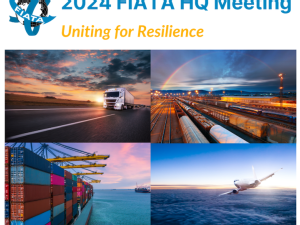AirAsia Plans to Expand Fleet as China Leads Demand Surge
By: | May 25 2016 at 10:20 PM | Air Cargo
AirAsia Bhd., Southeast Asia’s biggest budget carrier, plans to expand its fleet as it taps demand in a region projected to surpass the U.S. as the world’s biggest air-travel market in two decades, led by China.
The airline is looking to add five aircraft this year and as many as 10 more in 2017 “depending on demand,” Chairman Kamarudin Meranun said in an interview in Kuala Lumpur Wednesday. The company is also planning to increase the number of destinations in China from 18 and frequency of its flights in the world’s second-biggest economy, he said.
“We see the strongest growth in China,” he said. AirAsia, which is scheduled to release its quarterly earnings later on Thursday, currently has about 170 aircraft in its fleet.
AirAsia is among airlines in the region adding more aircraft as economic growth and rising incomes make air travel affordable to more people. Last month, Xiamen Airlines Co., a unit of China Southern Airlines Co., ordered 10 single-aisle jets worth about $851 million from Boeing Co., while the U.S. planemaker and its European rival Airbus Group SE split a $9.9 billion order for wide-body jetliners from China Eastern Airlines Corp.
International visitor demand into the Asia Pacific region is forecast to grow at an average rate of 4.6 percent each year to more than 657 million by 2020, according to a report released last month by Pacific Asia Travel Association.
Rivaling Americas
Southeast Asia will continue with its dramatic increase in foreign arrivals, improving its relative share from just under 20 percent in 2015 to around 22.5 percent by 2020, when it will rival the share of the Americas at that time, the report said. By 2034, one in five passengers in the world will be traveling to, from, or within China, according to the International Air Transport Association.
AirAsia carried 13.9 million passengers in the first quarter, according to preliminary operating statistics on May 9. That’s 17 percent more than the same period last year and well ahead of 6 percent increase in capacity.
The company is projected to report a flat net income of 149 million ringgit ($36.3 million) for the three months through March, according to the average estimate of analysts surveyed by Bloomberg.
AirAsia X Bhd., its long-haul arm, on Tuesday reported first-quarter net income of 179.5 million ringgit, swinging from a loss of 125.9 million ringgit a year ago. Revenue rose 25 percent to 970.7 million ringgit.
AirAsia is also looking to “clean up” its operations in the Philippines and Indonesia this year, Kamarudin said, adding that the plan won’t involve additional funding from the company. AirAsia Philippines is on track for an initial share sale in 2018, he said.
Shares of the low-cost carrier slipped 0.5 percent to 2.21 ringgit as of 10:12 a.m. in Kuala Lumpur. They have surged 74 percent this year, outperforming the benchmark FTSE Bursa Malaysia KLCI Index, which declined 3.5 percent over the same period.











